
Click to join GeigerCounterEnthusiasts

Click to join CDV700CLUB
 Click to join GeigerCounterEnthusiasts |
 Click to join CDV700CLUB |

In the century since radioactivity was discovered, radioactive substances have been used extensively for a number of applications. Especially in the early part of the 20th century, and to a lesser extent today, a number of commonly available products have been radioactive. These include: * luminous watch dials (radium and tritium) * orange ceramicware (notably Fiestaware from the 40s and 50s; uranium oxide) * smoke detectors (americium 241; in current use) * gas camping lantern mantles (thorium; some manufacturers no longer use this) * camera lenses (thorium) * static eliminators for film and records (polonium 210) * welding rods and arc lamps (thorium) * vacuum tubes (thorium was used to increase electron emission) A fascinating look at the proliferation of uses of radioactive materials in the last century can be found in the book "Living with Radiation: The First Hundred Years" by Paul Frame and William Kolb. It tells the story of the use of radioactive materials in consumer and commercial products in the century since radioactivity was discovered. Second edition: copyright William M. Kolb and Paul Frame, 2000. 256 pages, numerous photographs. 
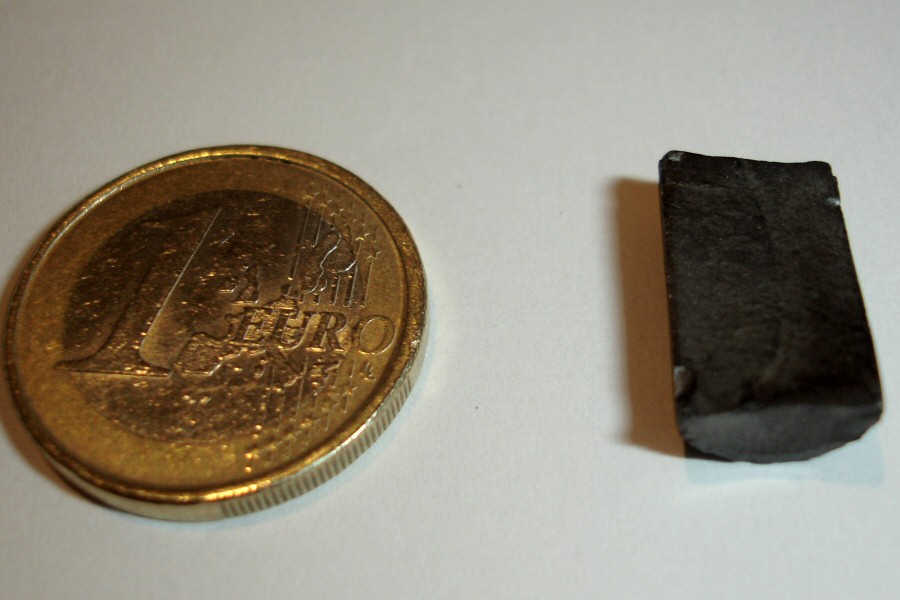
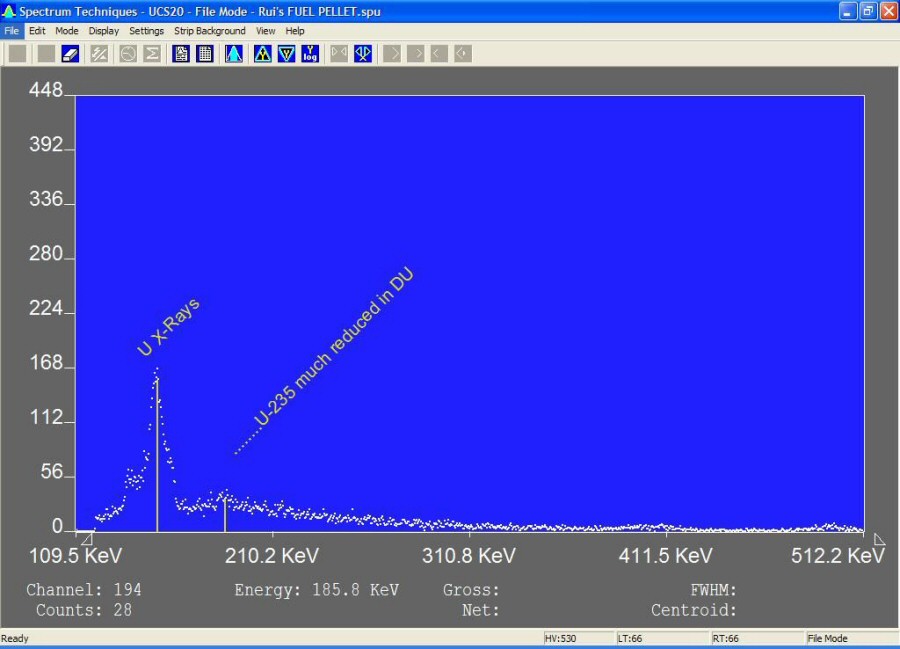
The nuclear fuel is slightly enriched uranium (2%) in the form of uranium dioxide. This is a chemically-stable and heat-resistant ceramic material. It is prepared in powdered form, pressed into small, 11 5 mm diameter and 15 mm long pellets and sintered in the presence of a binder. The pellet shape is adapted to an intensive, high-temperature operating mode. For example, the pellets have hemispherical indentations, in order to reduce the fuel column's thermal expansion and thermo-mechanical interaction with the cladding. One uranium nuclear fuel pellet the size of the tip of a little finger is equivalent to the energy provided by 1,780 pounds of coal; or 149 gallons of oil, as much oil as fits in three 50 gallon drums; or 17,000 cubic feet of natural gas. The energy is released inside the reactor through fission—the splitting of uranium atoms in a chain reaction. In the nuclear plant, the heat energy produced boils water into steam, which drives a turbine generator to produce electricity. Used nuclear fuel cannot explode and does not burn. Even when new, nuclear fuel is too weak to explode. Uranium mined from the ground is less than 1 percent fissionable and must be enriched to 4 percent in order to be used in a nuclear reactor. The uranium would have to be 20 to 90 percent enriched to be used as a weapon. Also, nuclear fuel does not burn when used in a nuclear reactor. In fact, it is not flammable. With my Inspector Alert, I measure, at the surface of the pellet (α+β+γ) ≅ 201.0 μSv/h 
14mm (9/16") yellow \ green Vaseline glass marbles in a nuke jar. The jar comes with 25 crackled and 25 non-crackled marbles. In normal light they seem to have a very high gloss and will have a slight glow in sun light but under black light (UV) they glow bright green. These will also register on a Geiger counter, though with a low reading of upto 200 CPM (50 CPM to 125CPM on average). 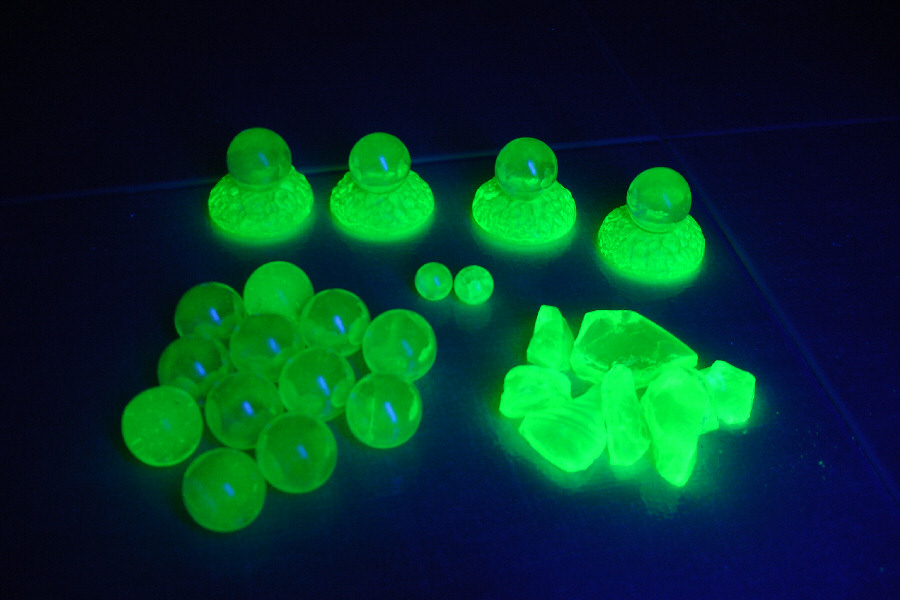
With my Inspector Alert, I measure, at the surface of the glass (α+β+γ) ≅ 5.67 μSv/h 
With my Inspector Alert, I measure, at the surface of the glass (α+β+γ) ≅ 2.57 μSv/h Made of clear glass, standing 5" high, the bowl has a high amount of Uranium content and even glows well under normal sunlight. With my Inspector Alert, I measure, at the top of the glass (α+β+γ) ≅ 11.51 μSv/h 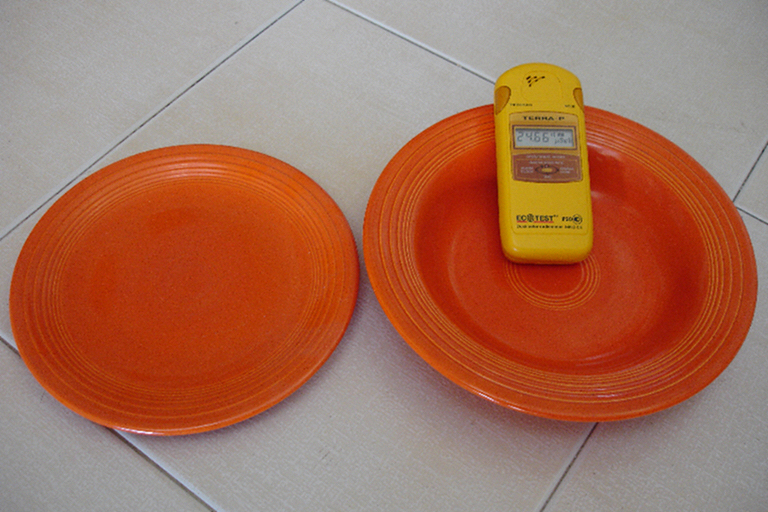
The uranium-containing red glaze of these plates was used from 1936 to 1943. It was discontinued from 1944 to 1958 due to a shortage of uranium caused by demand from the U.S. Government to build reactors and bombs. It was produced again from 1959 to 1969. The uranium that was used during this last period was supposedly "de-enriched" by removal of the fissionable isotope, Uranium 235. With my Inspector Alert, I measure (α+β+γ) ≅ 122.6 μSv/h Fiestaware vintage. The dishes include 2 vintage Fiesta red which has a minute amount of uranium and as well as the lead that was used in the old-style of glazing of the ware. Also included in this bid is a souvenir plate from the factory, which can be got only though touring the plant. Not yet received. With my Inspector Alert, I measure (α+β+γ) ≅ 147.6 μSv/h Since thorium is radioactive and produces a radioactive gas, radon-220, as one of its decay products, there are concerns about the safety of thorium mantles. Some nuclear safety agencies make recommendations about their use. A study in 1981 estimated that the dose from using a thorium mantle every weekend for a year would be 0.3-0.6 millirems, tiny in comparison to the normal annual dose of a few hundred millirems, although a person ingesting an entire mantle would receive a comparable dose of 200 mrem. However the radioactivity is a major concern for those people involved with the manufacture of mantles and with contamination of soil around some former factory sites. All of these issues have meant that alternatives, usually yttrium or sometimes zirconium, are used in some countries although they are either more expensive or less efficient. With my Inspector Alert, I measure, at the surface (α+β+γ) ≅ 61.80 μSv/h 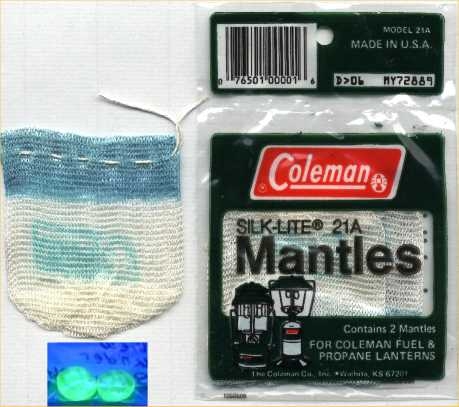
With my Inspector Alert, I measure, at the surface (α+β+γ) ≅ 80.70 μSv/h 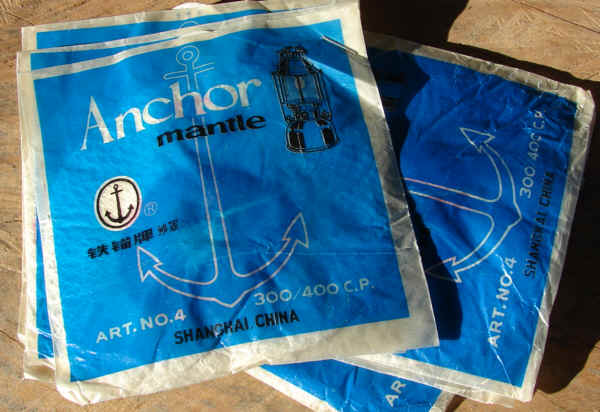
10 stk. Anchor Camping Gaz Mantles 300/400 C.P. Suitables for Coleman , German army lamp , Aida, Mewa, Golden Globe, Mannesmann, Anchor, Butterfly and other lanterns. It is old stock , and it is not radioaktiv free. With my Inspector Alert, I measure, at the surface (α+β+γ) ≅ 139.60 μSv/h 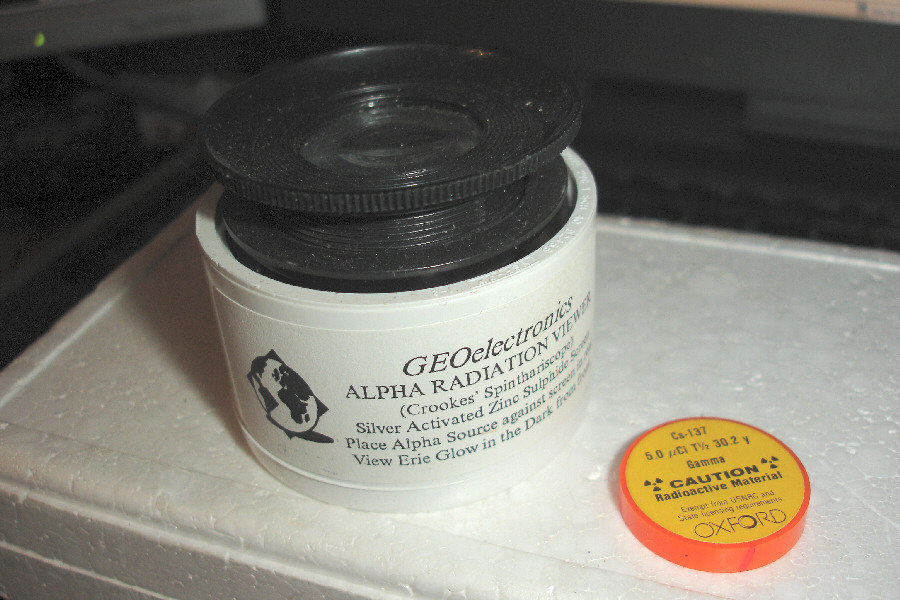
From my dear friend George, K0FF, this nice Alpha Radiaction Viewer. 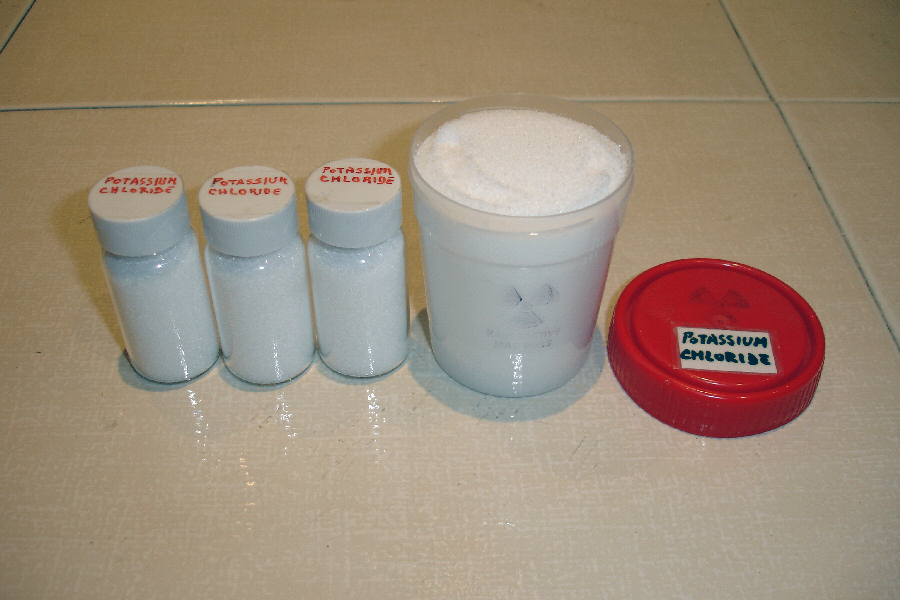
Potassium40(K40) is a naturally-occurring radionuclide. Wherever there is potassium, there is potassium40. If there is enough potassium, the K40 can be detectable with a simple survey instrument. Half-life: 1.28 x 109 years; Decay Mode: Beta decay (89.3%). The beta maximum energy is 1.31 MeV. Gamma Rays: 1461 keV (10.7%). Daily intake of potassium element: 3.3 grams. Amount of potassium element in body: 140 grams (1.5 pCi/g or 55 Bq/kg of body weight). Typical K40 activity in body: 0.1 μCi; This means that there are over 200,000 atoms of K40 that decay in the body each minute! Typical K40 activity in soil: 10 to 20 pCi/g. Dose from Potassium40: The dose to a typical member of the population is approximately 15-20 mrem/year due to the K40 in the body and 10 mrem/year due to the gamma rays emitted by K40 in the environment (primarily the soil). The human body maintains relatively tight homeostatic control over potassium levels. This means that the consumption of foods containing large amounts of potassium will not increase the body’s potassium content. As such, eating foods like bananas does not increase your annual radiation dose. With my Inspector Alert, I measure (α+β+γ) ≅ 1.67 μSv/h The vital ingredient of these household smoke detectors is a very small quantity (<35 kBq) of americium-241 (Am-241). This element was discovered in 1945 during the Manhattan Project in USA. The first sample of americium was produced by bombarding plutonium with neutrons in a nuclear reactor at the University of Chicago. Americium is a silvery metal, which tarnishes slowly in air and is soluble in acid. Its atomic number is 95. Its most stable isotope, Am-243, has a half-life of over 7500 years, although Am-241, with a half-life of 432 years, was the first isotope to be isolated. Americium oxide, AmO2, was first offered for sale by the US Atomic Energy Commission in 1962 and the price of US$ 1500 per gram has remained virtually unchanged since. One gram of americium oxide provides enough active material for more than 5000 household smoke detectors. 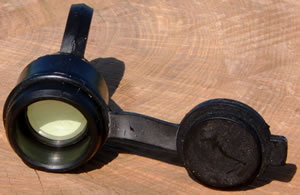
The Betalight is a self-illuminated unit with a wide range of uses is compact, robust and has an in-service life of over ten years. Illuminates without affecting night vision. A glass capsule internally phosphor-coated and filled with H3 tritium gas, activates the phosphor to emit light. With my Inspector Alert, I measure (β+γ) ≅ 8.43 μSv/h Nite Glowrings are laser sealed borosillicate glass vials which are internally coated with phosphor injected with gas which then reacts with the phosphor to create a cold energy which produces a low level light source with no filaments or heat dissipation and no risk of fire or explosion. They are unaffected by water, oil and most corrosive materials and require no external power source or exposure to light, remaining fail-safe and maintainance free. Nite Glowrings lights are also used in many other applications such as in the dials and hands of wrist watches, LCD display panels, level bubbles and directional signage. With my Inspector Alert, I measure (β+γ) ≅ 30.01 μSv/h Movement: High Quality Swiss Component Movement. Crown: Screw Down. Case Diameter: 44mm. Water Resistance: 200 Meters (660 Feet). Crystal: Hardened Mineral Crystal. ILLUMINATION: 7 TRITIUM VIALS (SUPER BRIGHT!!! 25 milicuries of TRITIUM per vial - maximum allowed by US law). At 12: Two Red Vials. At 3, 6 ,9: Green Vials. H/M Hands: Green Vials. DATE Display at 4:30 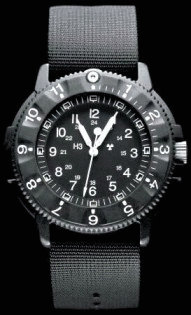
Traser watches are the easiest in the world to read in low light conditions and even in total darkness. Thanks to its research, the Swiss Company MB-Microtec Ag has succeeded in manufacturing a self-activated light source that is 100 times brighter than any previously available. The light-emitting devices require no battery power or any other form of charging, and never need servicing or maintenance. Traser watches are equipped with a tritium light source. These tiny airtight vials are sealed under high pressure, and are resistant to water, oil and the most corrosive materials. A minute quantity of tritium lights up the dye. These merits have made traser-watches an absolute must in the emergency, safety and protection sectors as well as in the armed forces, but are also ideal for fans of adventure and sport. H3 TRASER are top quality Swiss watches, extremely robust and reliable. Chosen by the worlds elite military units, including the SAS, SBS, US Navy Seal Teams, H3 watches have proven themselves on active duty throughout the world. 1940s Westclox Alarm clock - Model is called SPUR, luminous hands and Numbers. Works much like the Big Ben of the era - except SQUARE. The SPUR of this style design was made between 1938 and 1950. This one is likely late 1940's. Loud Ticker and Loud alarm too. This is the rare white (Ivory) model. Most of these are Black. Dial numbers and hands still glow well. ORIGINAL CONDITION - not a restoration. Movement Cleaned and oiled. 4-3/4 x 4-3/4 inch case. Dial is Mint. Loud ticker. Loud Alarm With my Inspector Alert, I measure, at the surface of the dials (α+β+γ) ≅ 274.90 μSv/h Antique "Westclox - Pocket Ben" pocket watch. Runs good but may need cleaning. Dial is black. Markers were once luminous but no longer glow. Case is very good. Outside diameter is 49mm. With my Inspector Alert, I measure, at the surface of the glass (β+γ) ≅ 65.54 μSv/h 
Vintage Soviet Russian military hand compass. Made in USSR in 1949 (the date of produce is printed at the bottom of the compass, visible at the separate photo). Material - brass and bakelite. Glass is real, not organic. Good condition, fully functional. Compass has a needle locking device. Diameter - 5 cm, thickness 1.5 cm. With my Inspector Alert, I measure at the surface of the glass (β+γ) ≅ 11.52 μSv/h 
Vintage Soviet Russian military hand compass. Made in USSR in 1940-50s. Material - brass and bakelite. Glass is real, not organic. Best condition, fully functional. Compass has a needle locking device. Diameter - 5 cm, thickness 1.5 cm. Compass is slightly radioactive - 600 micro-Rontgens per hour because arrow and a part of scale is covered by phosphorus. With my Inspector Alert, I measure at the surface of the glass (β+γ) ≅ 23.45 μSv/h 
Mil and Degree Markings - The main compass dial is marked in mils with degree markings on a secondary inner scale. Includes luminous points on needle, backplate and dial for night navigation. Tritium Night Illumination - Tritium gas within the luminous dial section improves night navigation backlighting.Normal luminosity works by absorbing light during the day then giving it out in darkness. Tritium gas works in the same way but is more efficient as the Tritium is slightly radioactive and is able to generate some portion of it's own light. Full Size Base Plate - The large base plate is designed for intensive map use, with ergonomic design and built-in magnifier. Map Measuring Scales - Includes 1:25k, 1:50K, 1:63.36K, mm and inch measuring scales. With my Inspector Alert, I measure at the surface of the tritium vial (β+γ) ≅ 0.60 μSv/h STATICMASTER ANTI STATIC BRISH WITH A VERY MILD POLONIUM RADIOACTIVE CELL WITCH NEUTRALIZES STATIC. THE CELL IS ABOUT 8 YEARS OLD BUT IN GREAT SHAPE COMES WITH MANUAL IN THE ORIGNAL BOX. This is a genuine Firestone T30 Polonium spark plug. It has never been used and is therefore in as new condition. To keep it that way it has been expertly mounted inside a glass dome – approx 10 cm high - sitting atop a wax polished mahogany plinth with felt on the base (you could remove and use it if you need one for your late 1940’s Chevy…). This spark plug is now completely non-radioactive and perfectly safe to own and handle. It comes with a reproduction of the original packaging sheet (seen behind the spark plug). 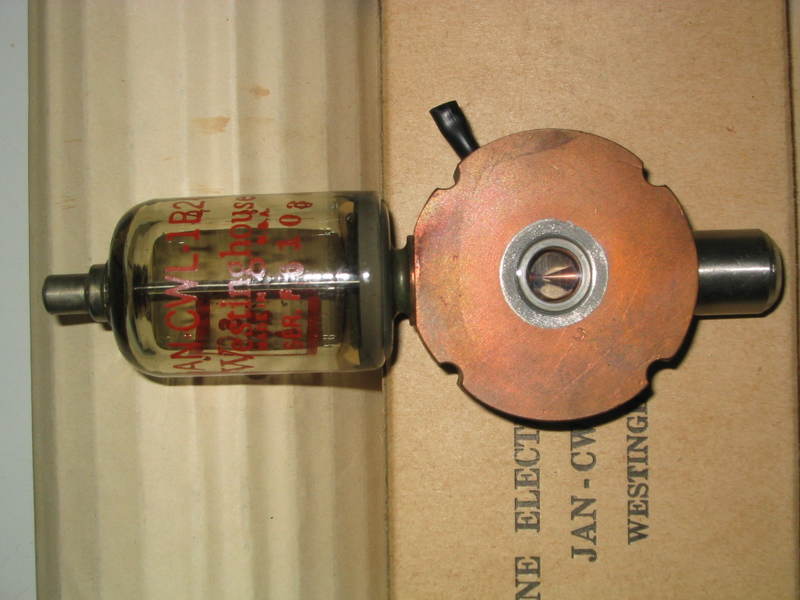
A somewhat unusual old tube. The disc is solid copper, about 5/8" thick, with a spark gap in the center window. Mint WWII condition. With my Inspector Alert, I measure 23.02 µSv/h at the solid copper disc and 8.30 µSv/h at the surface of the glass. 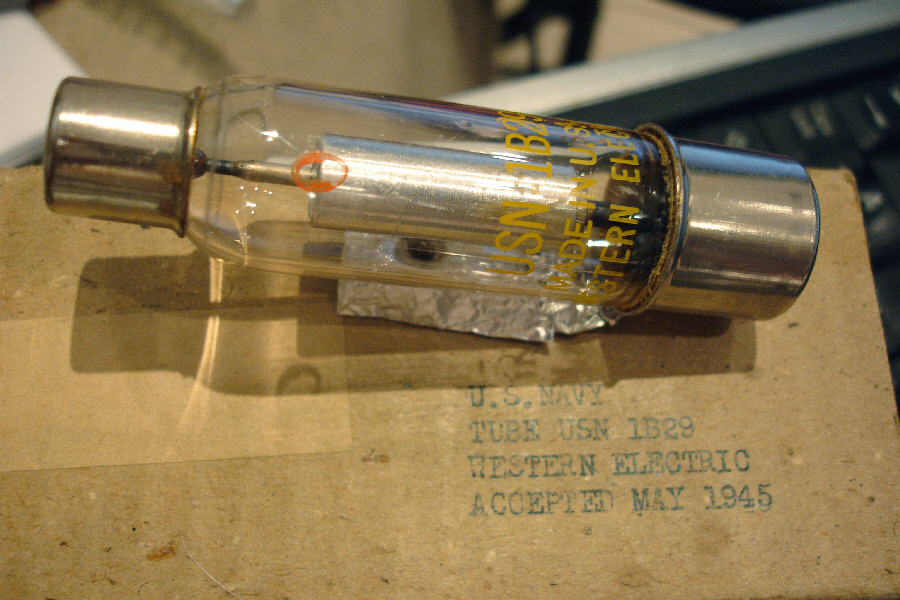
Western Electric USN 1B29 U.S.Navy May 1945. With my Inspector Alert, I measure 66.36 µSv/h at the surface of the glass. 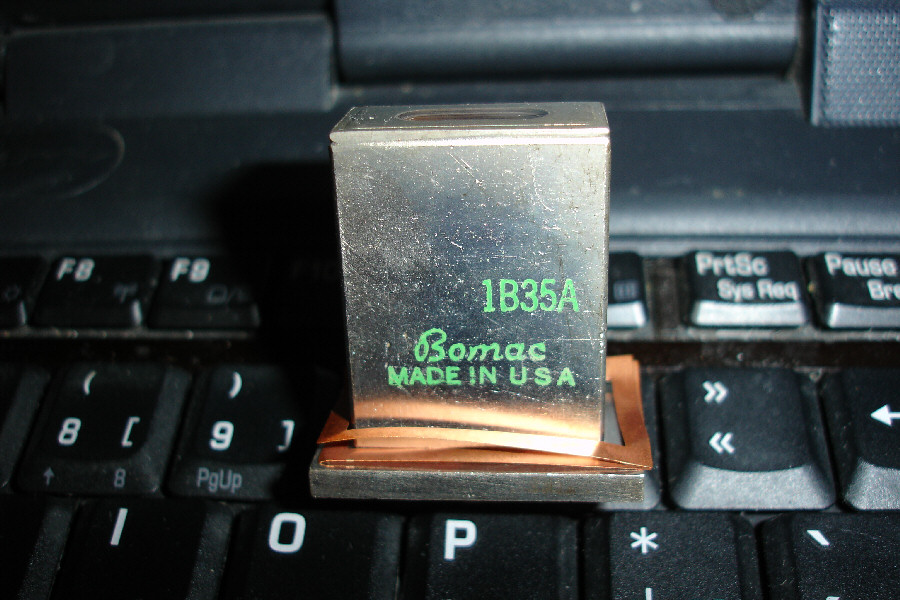
1B35A / 6038 / CV3628 BOMAC MADE IN USA TUBE with Co-60. With my Inspector Alert, I measure (β+γ) ≅ 0.24 μSv/h 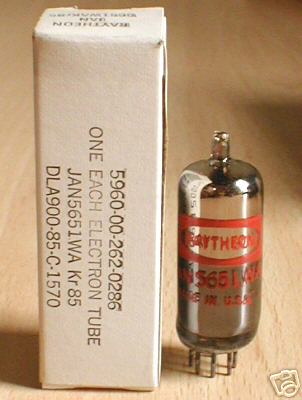
5651WA JAN RAYTHEON TUBE with Kr-85. With my Inspector Alert, I measure, at the surface of the glass (β+γ) ≅ 0.25 μSv/h NOS Tung Sol JTL 5654 /6AK5W. USA made with date code (1965). Original mil stock in several manufacturers R-390A receivers of that vintage and later. Short gray plates (2 ribs) with top “D” getter.. With my Inspector Alert, I measure, at the surface of the glass (β+γ) ≅ 0.23 μSv/h Western Electric 6141 / 427A 3 element cold cathode VR tube, 100 v regulation, 165 v. anode breakdown. Provides regulation of 0.1% from 5 to 40 ma., versus 5% for commercial tubes. One of the finest Regulators ever manufactured. 9 pin gas filled voltage regulator tube with high current (40ma) capability (KR85 doping, 4.0 μCu). With my Inspector Alert, I measure, at the surface of the glass (β+γ):
Northern Electric NE 313C cold cathode gas triode tube. Made in the U.S. - NOS boxed - Dated Mar 1973. With my Inspector Alert, I measure, at the surface of the glass (β+γ) ≅ 0.35 μSv/h Sylvania Glass Capacitor. High voltage. Model CHS-721A (a military part number). Copper and glass construction. Printed on side is SC 5340 A, CHS-721A, Made in USA, Sylvania, E4. 1 1/2 x 3 inches. LOOKS LIKE NEW. In original box with cardboard inserts and model number sticker on side. Not yet received. 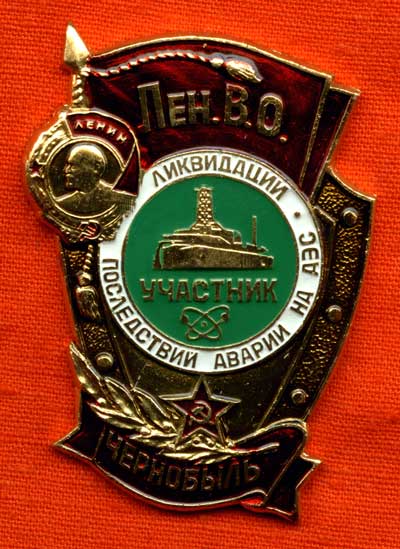
Legendary "LIQUIDATORS" insignia. The "LIQUIDATORS" is a collective name for Soviet firefighters, military, search & rescue, police, emergency situation ministry, civil defense personal and many other ordinary heroes - all participants in The Clean Up OPERATION of CHERNOBYL NUCLEAR POWER STATION DISASTER. In Russian exactly it says: "The participant of liquidation of consequences of failure on an atomic power station" [Uchastnik Likvidatzii Posledstviy Avarii na AES]. Len.VO abbreviation on the top means Leningrad Military District. "CHERNOBYL" in Russian below. Soviet Red Star and Red Banner Communist Symbols and miniature of the Lenin Order Award. Well-made heavy brass, hand-enameled bright deep colors. The Chernobyl accident in 1986 was the result of a flawed reactor design that was operated with inadequately trained personnel and without proper regard for safety. The resulting steam explosion and fire released about five percent of the radioactive reactor core into the atmosphere and downwind. The April 1986 disaster at the Chernobyl nuclear power plant in the Ukraine was the product of a flawed Soviet reactor design coupled with serious mistakes made by the plant operators in the context of a system where training was minimal. It was a direct consequence of Cold War isolation and the resulting lack of any safety culture. The accident destroyed the Chernobyl-4 reactor and killed 30 people, including 28 from radiation exposure. A further 209 on site were treated for acute radiation poisoning and among these, 134 cases were confirmed (all of whom recovered). Nobody off-site suffered from acute radiation effects. However, large areas of Belarus, Ukraine, Russia and beyond were contaminated in varying degrees. The Chernobyl disaster was a unique event and the only accident in the history of commercial nuclear power where radiation-related fatalities occurred. Subsequent studies in the Ukraine, Russia and Belarus were based on national registers of over 1 million people possibly affected by radiation! The power plant is located at 51°23'23"N, 30°5'58"E, near Pripyat, Ukraine, at the time part of the Soviet Union.  
Legendary Soviet "LIQUIDATORS" commemorative award. Exact words in Russian on the reverse side of the medal: "IN THE MEMORY OF CHERNOBYL TRAGEDY 26 APRIL 1986". Firefighter in action, Dangerous Radiation Warning Sign and Helicopter above Nuclear Power Station in the background are embossed on the obverse front side. Radioactive Hazard Logo Belly Bar, already installed. Don't ask... 
|

